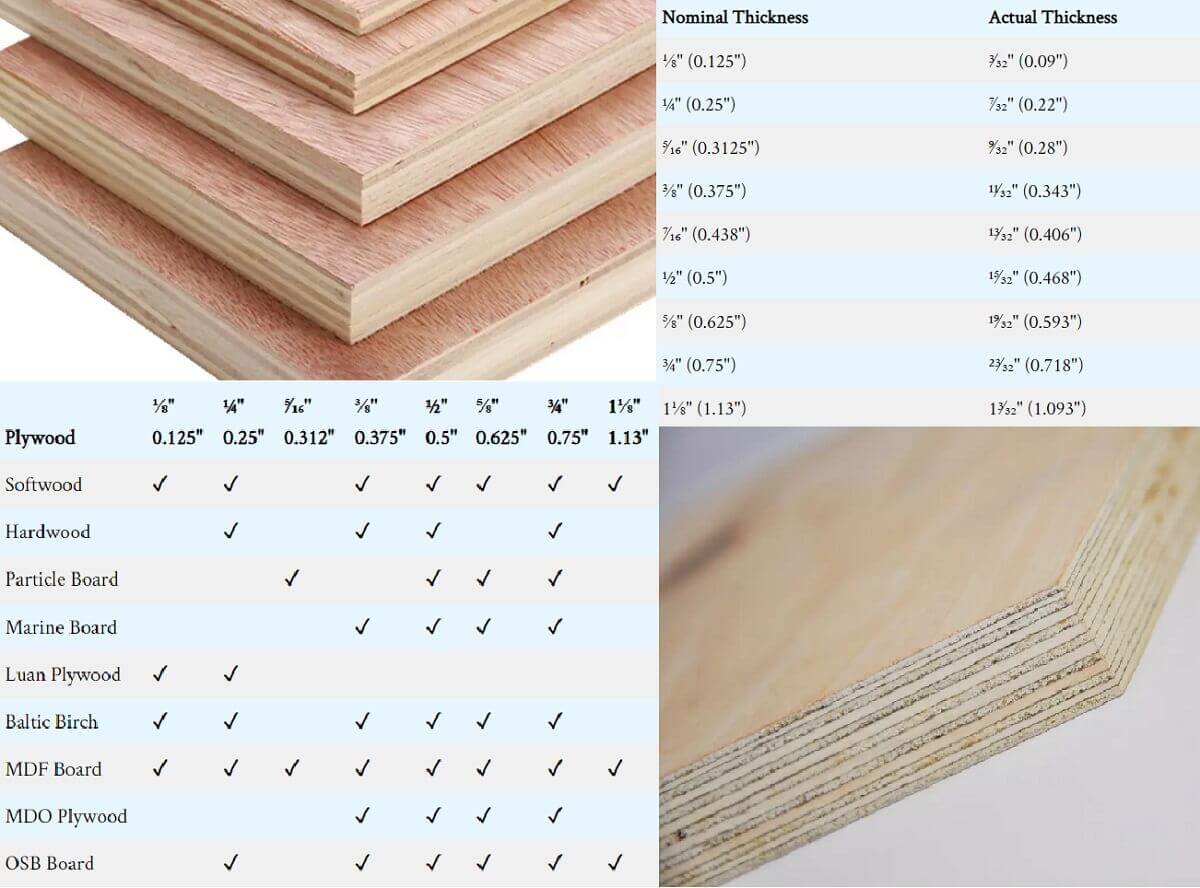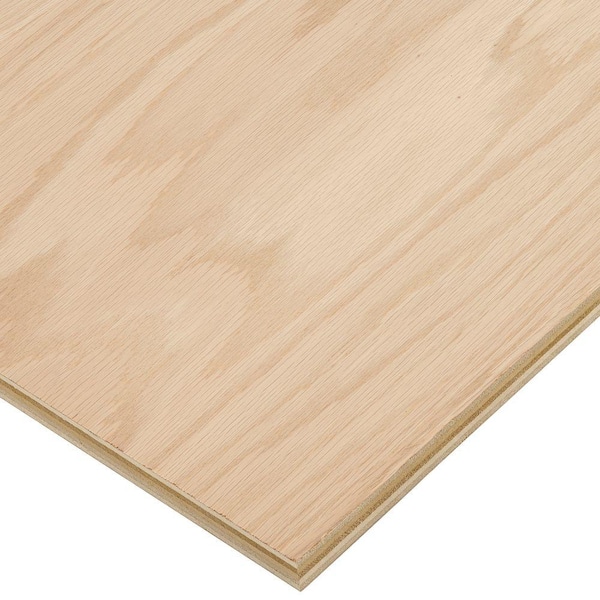Looking for plywood larger than 4×8? Wondering if such a thing even exists? Well, you’re in the right place! Today, we’re diving into the world of plywood and exploring whether you can get it in sizes that go beyond the traditional 4×8 dimensions. So, if you’re ready to learn something new and exciting, let’s get started!
Plywood has long been a popular choice for various construction and woodworking projects. Its versatility and strength make it a go-to material for many builders and DIY enthusiasts. But when it comes to size, does plywood go beyond the standard 4×8 dimensions? That’s the question we’re here to answer!
If you’ve been imagining larger plywood sheets for your project, you’ll be happy to know that, yes, you can get plywood in sizes bigger than 4×8. While 4×8 is the most common size available at most hardware stores, larger sizes are indeed achievable. With the advancement in technology and manufacturing processes, plywood sheets can be customized to fit your specific needs. So, let’s dive deeper and explore the options out there for larger plywood sheets!
Looking for plywood larger than 4×8? While standard plywood sheets come in 4×8 dimensions, there are specialty suppliers that offer larger sizes. These larger plywood sheets are often used for industrial or commercial projects. To find plywood larger than 4×8, consider contacting specialty lumber yards or distributors who may be able to provide custom-sized sheets. Keep in mind that availability and pricing may vary, so it’s best to reach out to local suppliers for more information.

Can You Get Plywood Larger Than 4×8?
The standard size for plywood sheets is 4×8 feet for several reasons. Firstly, this size is convenient for transportation and handling. It fits well on trucks and can be easily maneuvered by workers on a construction site. Additionally, the 4×8 standard allows for efficient cutting and optimization, reducing waste during production. It has become an industry norm, making it readily available and cost-effective for both manufacturers and consumers. Moreover, 4×8 sheets of plywood are compatible with standard building materials, such as wall studs, floor joists, and roof trusses, which are also designed with this size in mind. This compatibility ensures seamless integration during construction, simplifying the process for builders. However, while 4×8 sheets are the most common, the plywood market does offer alternatives for those seeking larger dimensions. Although 4×8 sheets are the standard, plywood manufacturers recognize the demand for larger sizes. As a result, they offer variations to accommodate different needs. Here are some alternatives to consider: Manufacturers do produce oversized plywood sheets that exceed the dimensions of the standard 4×8 sheets. These oversized sheets can measure up to 5×10 or even 6×12 feet. They are often used in industrial, commercial, or specialized projects that require larger panel sizes. While oversized plywood is less common and may be more challenging to find, it is still available from certain suppliers. Another option for obtaining plywood larger than 4×8 feet is by combining multiple sheets. By joining multiple plywood sheets together, you can create larger panel sizes tailored to your specific needs. This technique, known as lamination, involves bonding the sheets using specialized adhesives and techniques to ensure a secure and sturdy connection. If neither oversized plywood sheets nor combining multiple sheets suits your requirements, you can explore the option of placing a custom order. Many plywood manufacturers offer custom cutting and sizing services, allowing you to specify the dimensions you need. This option may incur additional costs and require longer lead times, but it provides the flexibility of obtaining precisely the size you require. For large-scale construction projects, having plywood sheets larger than the standard 4×8 size can improve efficiency and productivity. Fewer joints and seams mean less time spent on cutting, aligning, and joining the panels together. This can result in substantial time savings and a smoother construction process. By using larger sheets of plywood, you can minimize material waste. Smaller panels often require additional cuts, which can lead to excess scraps and unused portions. Larger sheets provide more flexibility for cutting precise dimensions, reducing waste and optimizing material usage. When working on projects that require large surfaces, such as large furniture, wall paneling, or stage sets, using plywood sheets larger than 4×8 can result in a more seamless and visually appealing finish. With fewer joints and seams, the overall appearance is enhanced, providing a professional and cohesive aesthetic. Before undertaking a project that requires plywood larger than 4×8 sheets, plan meticulously. Take accurate measurements, create detailed layouts, and ensure the dimensions align with the specifications of the custom order or oversized sheets. Proper planning will help avoid any complications during construction and ensure a smooth process. Working with larger plywood requires extra assistance and appropriate equipment. Ensure you have enough manpower to handle and maneuver the sheets safely. Additionally, invest in tools like panel carriers, clamps, and support brackets to make the process more manageable and minimize the risk of damage or injury. Transporting larger plywood sheets can be more challenging compared to standard sizes. Before ordering or purchasing oversized sheets, consider the logistics and ensure you have a suitable vehicle or shipping method to transport them to the project site. Adequate planning for transportation will ensure that the sheets reach their destination safely and without any delays or complications. While the standard size for plywood sheets is 4×8 feet, there are alternatives available for those in need of larger dimensions. Oversized plywood sheets, combining multiple sheets, or placing custom orders are all viable options. Working with plywood larger than 4×8 sheets offers benefits such as increased efficiency, reduced waste, and improved aesthetics. However, it’s important to plan ahead, have sufficient help and equipment, and consider logistics when working with larger plywood sizes. With careful consideration and proper execution, plywood larger than 4×8 can be successfully incorporated into various construction and woodworking projects.Why Is 4×8 Feet the Standard Size for Plywood Sheets?
Alternatives to 4×8 Plywood Sheets
1. Oversized Plywood Sheets
2. Combination of Plywood
3. Custom Orders
Benefits of Plywood Larger Than 4×8 Sheets
1. Increased Efficiency in Larger Scale Projects
2. Reduced Material Waste
3. Seamless Aesthetics
Tips for Working with Plywood Larger Than 4×8 Sheets
1. Plan Ahead
2. Obtain Sufficient Help and Equipment
3. Consider Logistics and Transportation
In Conclusion
Can You Get Plywood Larger Than 4×8?
- 1. Yes, you can get plywood larger than 4×8.
- 2. Large plywood sizes are commonly used for projects that require broader panels.
- 3. Specialty suppliers or lumber yards may carry plywood in sizes like 4×10 or 4×12.
- 4. These larger sizes may be more expensive than standard 4×8 sheets.
- 5. It’s important to determine your specific project needs and consult with a supplier for availability.
Frequently Asked Questions
When it comes to plywood, many people wonder if it’s possible to find sheets larger than the standard 4×8 size. This article will address some common questions related to obtaining plywood in larger dimensions.
Q: How can I get plywood larger than 4×8?
A: Yes, it is possible to find plywood sheets that are larger than the standard 4×8 size. While 4×8 sheets are the most common and readily available, there are suppliers and manufacturers that offer plywood in larger dimensions. These larger sheets are typically used for specialized applications, such as industrial projects, construction, or custom furniture. Some suppliers may have these larger sheets in stock, while others may be able to custom-cut plywood to your desired dimensions.
It’s important to note that plywood sheets exceeding the standard 4×8 size might not be as easily accessible and may require special ordering or sourcing from specialized suppliers. Additionally, larger plywood sheets tend to be more expensive and may have longer lead times compared to standard sizes.
Q: What are the benefits of using plywood larger than 4×8?
A: Using plywood larger than the standard 4×8 size offers several benefits. First, it reduces the number of seams or joints in your project, resulting in a more seamless and visually appealing finish. This can be particularly advantageous for applications where a large, flat surface is desired, such as countertops or wall paneling.
Moreover, using larger plywood sheets can also reduce installation time and effort, as fewer sheets need to be joined together. This can be especially useful for commercial or large-scale projects, where time and efficiency are crucial factors. Additionally, larger plywood sheets provide more coverage area, which can be cost-effective and minimize wastage, making them a practical choice for certain projects.
Q: Are there any drawbacks to using plywood larger than 4×8?
A: While there are benefits to using plywood larger than 4×8, it’s important to consider potential drawbacks as well. One primary concern is transportation and handling. Larger sheets can be more challenging to maneuver, especially in tight spaces or if you are working alone. It may require additional equipment or assistance to safely transport and install these larger sheets.
Another factor to consider is cost. Larger plywood sheets often come at a higher price compared to standard sizes due to increased material costs, transportation logistics, and manufacturing processes. It’s essential to evaluate your project’s requirements and budget to determine if the benefits outweigh the additional expenses. Lastly, availability might be limited for larger plywood sheets, especially in certain regions or if you require specific grades or types of plywood. Consider reaching out to specialized suppliers or manufacturers to explore your options.
Q: Can I cut plywood larger than 4×8 to a smaller size?
A: Yes, it is possible to cut plywood larger than 4×8 to a smaller size. If you have a larger plywood sheet and need it in smaller dimensions for your project, you can use various cutting tools, such as a circular saw or table saw, to trim the plywood to the desired size. It’s important to ensure accurate measurements and precise cutting to achieve the desired results.
However, keep in mind that cutting down a larger plywood sheet may result in additional waste material. It’s advisable to plan your cuts carefully to minimize wastage and maximize the usability of the remaining plywood. Additionally, if you lack experience or the necessary tools, it’s recommended to consult with a professional or seek assistance to ensure safe and accurate cutting.
Q: What are the common sizes for plywood larger than 4×8?
A: While plywood larger than the standard 4×8 size can be custom-made to specific dimensions, there are some common sizes available in the market. These include 4×10, 4×12, and 5×10 sheets. These larger dimensions provide additional coverage area and can be useful for various applications, ranging from construction and flooring to specialized woodworking projects. However, it’s important to note that availability may vary depending on the region and supplier, so it’s advisable to check with local suppliers or manufacturers for the specific sizes they offer.
It’s worth mentioning that beyond these common sizes, certain suppliers may provide even larger plywood sheets, especially in industrial or specialized sectors. These sheets can range from 5×12 to 8×20 feet or even bigger, catering to specific project requirements. However, these larger sizes are less common and may require special ordering or sourcing from specialized suppliers.

Summary
If you’re looking for plywood larger than 4×8, it’s hard to find. Most plywood sheets come in that size, and if you need something bigger, you may have to get creative. Some options include joining multiple sheets together, using special-order plywood, or exploring alternative materials like MDF or particle board.
Keep in mind that larger plywood sheets can be harder to work with and transport. They may also be more expensive and less readily available. Consider your project’s needs and weigh the pros and cons before deciding on the best solution for you.
